
JAPANESE PRINTS
A MILLION QUESTIONS
TWO MILLION MYSTERIES
|
Ukiyo-e Prints |
|
Port Townsend, Washington |
|
TOYOHARA KUNICHIKA 豊原国周 とよはら.くにちか (1835-1900) |
|
Subject: Prince Genji on an outing |
|
Publisher: Ki-ya Sojiro 木屋宗次郎 きや.そうじろう |
|
Total size: 14 1/4" x 28 1/2" |
|
Date: 1865, 5th Month Keiō 1 慶応1年 |
|
Signed: Kunichika ga |
|
Illustrated: 1. On-line at the Boston Museum of Fine Arts web site 2. There is a crepe print example of the left hand panel in the Museum für angewandte Kunst in Vienna
|
|
Condition: Good to excellent color. Each sheet still has Japanese paper backing from when this triptych was in an album. (That explains the good coloring.) The left hand sheet includes a slight portion of the left side of the middle sheet. |
|
Originally priced at $470.00 Now on sale for $320.00 |
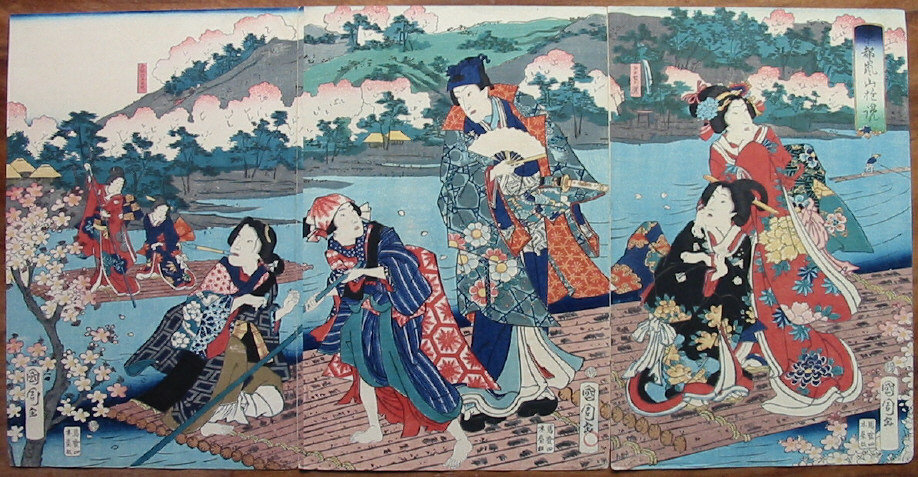 |
||
|
BURNISHING |
||
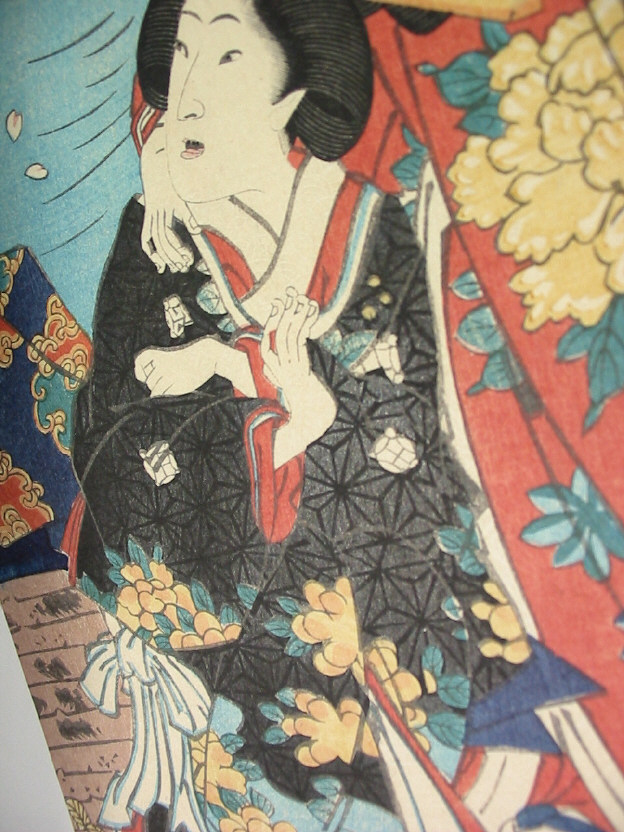 |
||
|
A fellow wrote me and asked if there was any metallic printing on this triptych. Off hand I couldn't think of any and told him I would get back to him. That led to a closer examination of these prints and I discovered two things in particular: There are several areas of burnishing with one prominent display of black on black burnishing seen above and that one of the woman had blackened teeth while the woman standing next to her did not. (See the details below.)
The pattern which Kunichika or his publisher chose to reproduce in such a subtle way is known as asanohamon (麻の葉文 or あさのはもん) which is composed of six-pointed stars. While it appears on the prints of many other artists it was prominently displayed on Kunichika prints. |
||
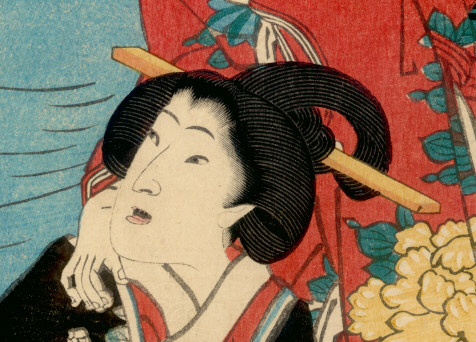 |
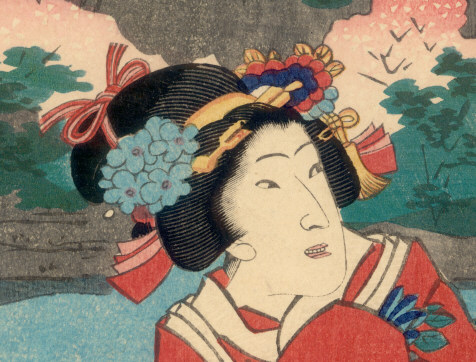 |
|
 |
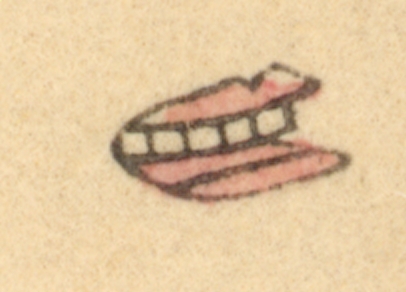 |
|
|
OHAGURO お歯黒 おはぐろ OR TOOTH BLACKENING
In one of our index/glossary listings we discussed tooth blackening. It had an ancient tradition going more than a thousand years. In that time it changed somewhat culturally from being an elitist practice to a more generalized beauty technique. By the time of the Edo period (1603-1868) it was required of married women. The triptych on this page fits into that time period and may be a clue to the possible to the identity of the stooping or kneeling woman in the right-hand panel. |
||
|
TITLE CARTOUCHE (Seen above) |
|
|
|
|
|
|
PUBLISHER'S SEAL: Ki-ya Sojiro |
|
DATE SEAL: 1865, 5th Month |
|
|
SIGNATURE: Kunichika ga |
|
|
|
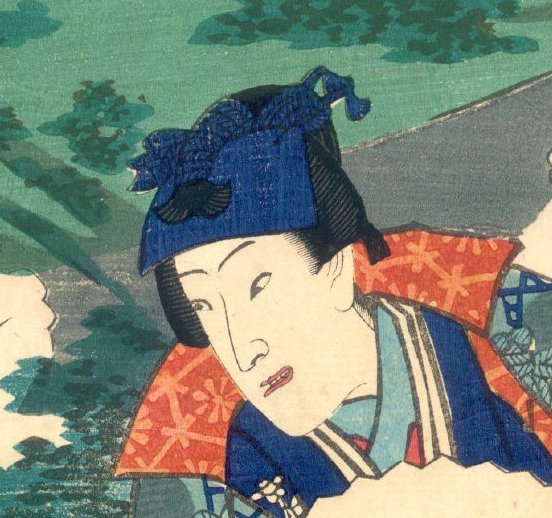 |
||||
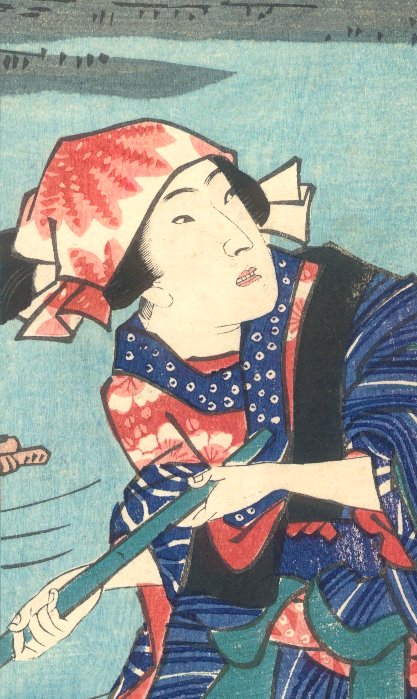 |
.jpg) |
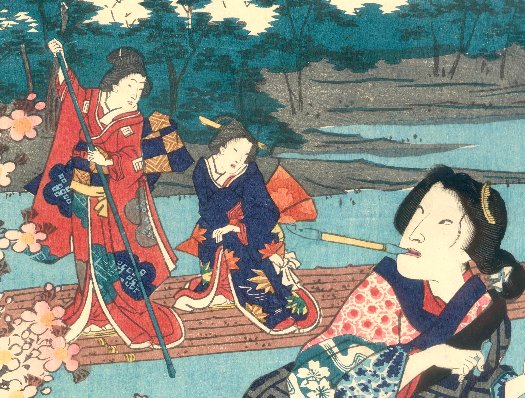 |
||
|
Direct purchase may be made through check or money order or by payment through PayPal.
Contact us if you are interested. |
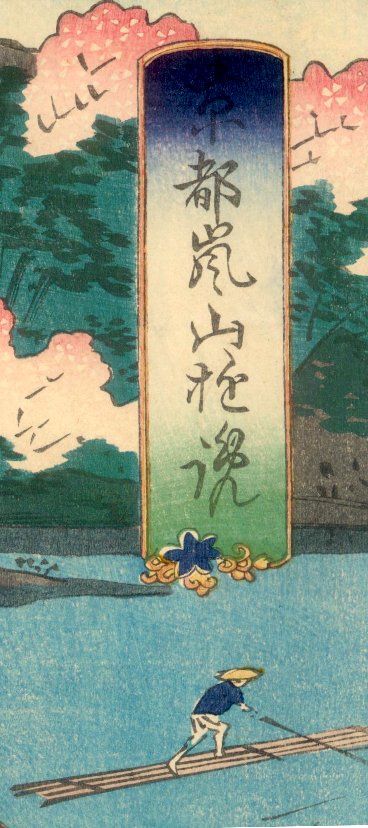

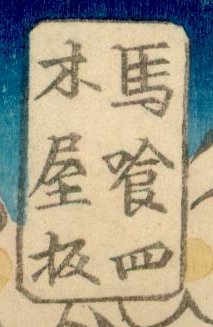
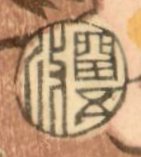

 HOME
HOME